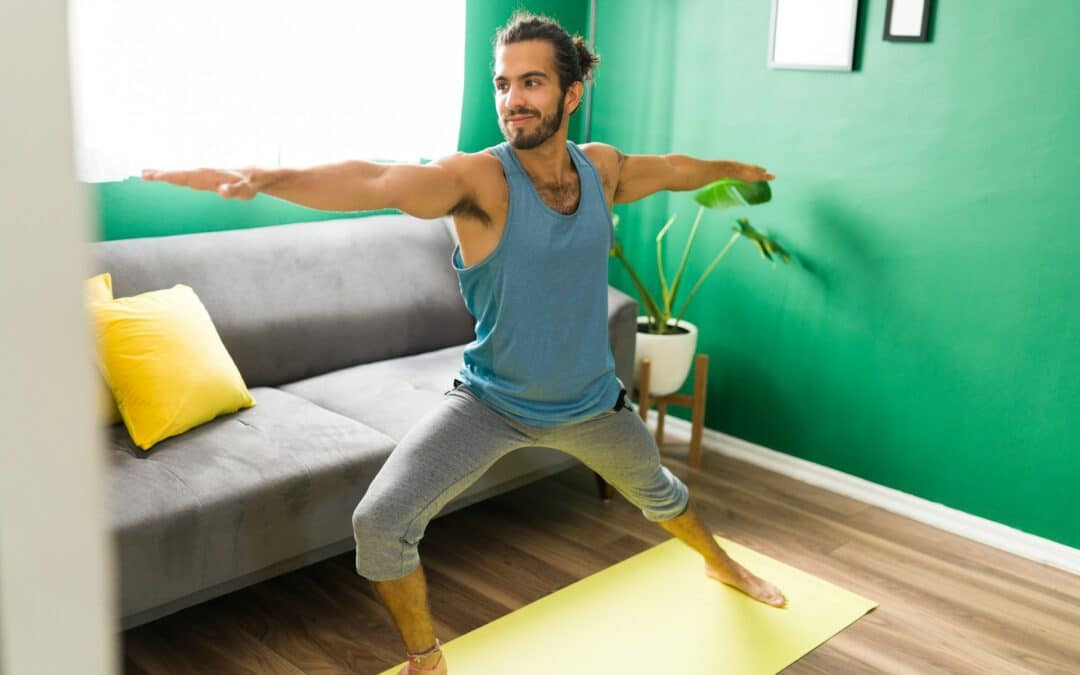Yoga serves as a powerful tool for emotional healing, particularly for gay men seeking a safe and affirming space. It allows individuals to connect with their bodies, fostering a sense of self-acceptance and peace. This connection plays a vital role in emotional healing, providing stability and comfort in an often challenging world. Practicing yoga regularly can help manage and reduce stress, anxiety, and emotional struggles by encouraging mindfulness and self-awareness.
As a practice that encompasses both physical and mental aspects, yoga offers unique benefits for emotional well-being. It helps individuals create a balanced and centered state of mind, enhancing their capacity to deal with emotions more effectively. Especially for gay men, yoga can be a sanctuary to explore feelings, improve mental clarity, and nurture emotional growth. The following sections explore specific yoga poses that contribute to emotional healing and explain how they can be incorporated into daily life.
Yoga Poses for Emotional Healing
1. Child’s Pose (Balasana)
– Calming Effects: Child’s Pose is a nurturing position that promotes inner peace. It encourages relaxation by gently stretching the back and shoulders, creating a calming effect on the mind.
– Stress and Anxiety Relief: This pose is particularly effective in reducing stress and anxiety. By lowering the body and bringing the forehead to the mat, it signals the mind to embrace stillness and release tension.
2. Bridge Pose (Setu Bandhasana)
– Heart Chakra and Emotional Release: Bridge Pose opens up the chest and heart area, facilitating emotional release. This can help clear emotions that may be bottled up, promoting openness and acceptance.
– Mental Clarity: By lifting the hips and creating a sense of balance, the pose enhances mental clarity. It encourages focus and a clearer mindset, assisting individuals in addressing emotional obstacles with confidence.
Practicing these poses regularly can lay a foundation for emotional stability and openness. By focusing on the breath and body movements, individuals can better manage their emotions and cultivate a deeper sense of inner peace. These yoga sequences offer a pathway to explore and heal emotional challenges while nurturing a loving relationship with oneself.
Yoga Poses for Emotional Healing (Continued)
3. Warrior II (Virabhadrasana II)
– Building Inner Strength and Confidence: Warrior II is a dynamic pose that fosters self-assurance. It helps you feel powerful and ready to face challenges by grounding your energy.
– Grounding and Stabilizing Effects: This pose demands focus and resolve. By aligning your body and extending your limbs, you create a stable base that supports both mental and emotional stability.
4. Seated Forward Bend (Paschimottanasana)
– Soothing and Introspective Nature: Seated Forward Bend invites a deep stretch and calming presence. It’s perfect for moments when you need to turn inward and reflect.
– Emotional Introspection and Release: By folding forward, you encourage a gentle surrender that can help release held emotions. This pose supports a sense of letting go and emotional liberation.
5. Legs-Up-The-Wall Pose (Viparita Karani)
– Relaxing and Restorative Properties: Legs-Up-The-Wall is your go-to for deep relaxation. By elevating your legs against the wall, you allow gravity to assist in releasing tension.
– Anxiety Relief and Calm: This restorative position is ideal for calming the mind and easing anxiety. It nurtures a sense of tranquility and promotes restful relaxation.
Incorporating Breathing Techniques
Proper breathing is a cornerstone of emotional balance. Incorporating breathing exercises, or pranayama, into your yoga practice can enhance emotional healing significantly.
– Deep Belly Breathing: This simple technique involves breathing deeply into the abdomen. It activates the body’s relaxation response, helping to mitigate feelings of stress and anxiety. Just a few minutes each day can create a noticeable shift in emotional state.
– Alternate Nostril Breathing: This exercise balances both sides of the brain, encouraging harmony and clarity. It’s particularly useful for settling the nervous system and promoting mental clarity. These breathing practices are great additions to your yoga routine and can be done anywhere, offering quick emotional calmness.
Creating a Safe Space for Practice
Creating a safe and welcoming space for yoga is key to making the most of your practice. Whether at home or in a studio, ensure the environment is calming and free from distractions. Here are some tips to consider:
– Personalize Your Space: Add meaningful items like photos or art that resonate with you emotionally. Soft lighting and calming scents can also help create a soothing ambiance.
– Set Boundaries: Ensure you have the space and time to focus fully on your practice. Let others know this is your time for personal growth and emotional healing.
Yoga is a personal journey, and tailoring the practice to meet individual needs further supports emotional recovery. Doing this allows the practice to become a refuge, a place where emotional exploration feels safe and nurturing.
Reflecting on Yoga for Emotional Healing
Emotional healing through yoga is a gentle yet powerful approach to nurturing the soul. These practices guide you to listen to your body and emotions, fostering a space of openness and acceptance. Integrating these poses and breathing exercises into your daily routine can transform your emotional landscape.
Exploring yoga offers an opportunity to embrace personal growth and emotional stability. This path fosters a loving connection with oneself, promoting a balanced state of mind and heart. Yoga not only enriches life with physical benefits but also opens doors to emotional well-being and resilience.
Yoga is a transformative tool that can guide you towards emotional well-being and self-discovery. If you’re ready to deepen your practice and experience yoga for gay men, explore classes offered by Danni Pomplun. Discover a supportive community, enrich your journey, and find the balance you’ve been seeking.

